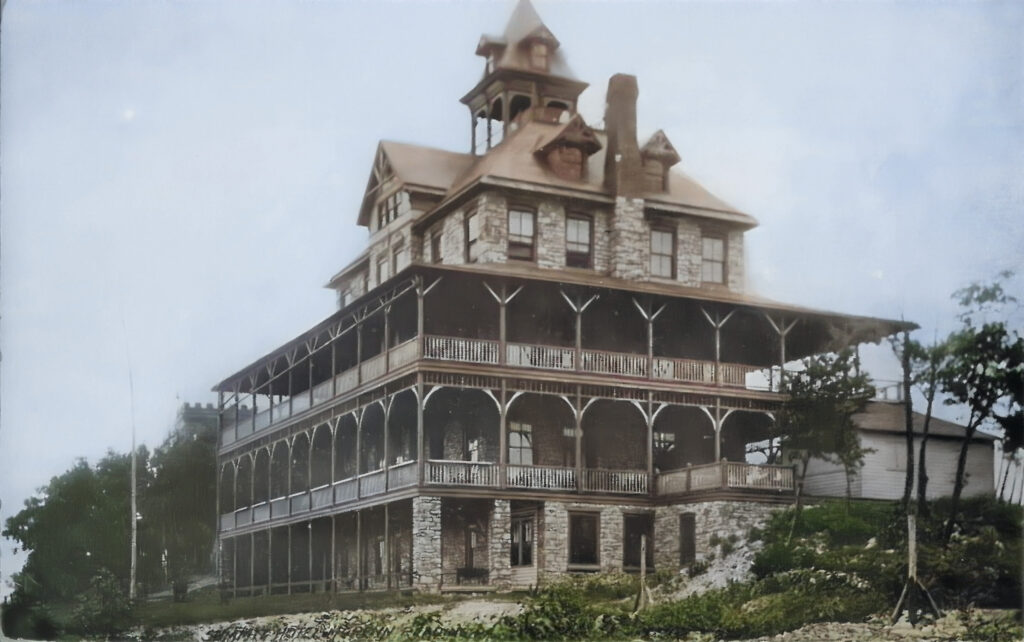
Summit House Hotel
The Summit House Hotel was once a popular destination along the Gravity Railroad on Mount Penn. Construction of the building began in the summer of 1891. The first mention of the establishment in the Reading Times was on August 7th, 1891 when a small snippit was published in the “City News in Brief” section stating that the Schwartz Brothers had named their new hotel the “Summit House“. It also mentioned the bar room was complete and a liquor license was about to be acquired. It opened officially on September 22nd, 1891, in which the Ringgold Band rendered an afternoon performance, a Germania band played in the evening, and the Gravity Railroad fare was reduced to fifteen cents for the occasion. The hotel was only open for a short time and closed during the harshest winter months, reopening again in spring.
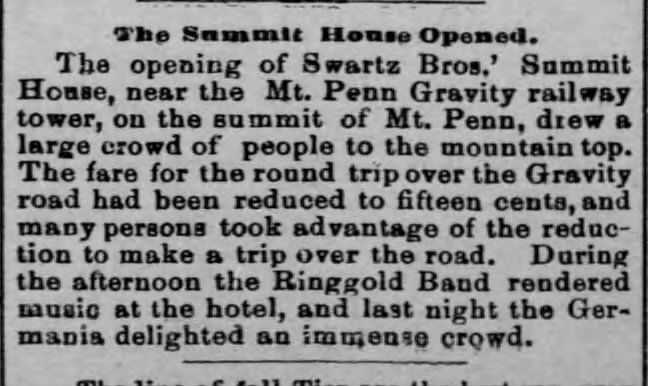
Gravity Tower
The Gravity Railroad began operations in 1890 and this area was one of the main stops. Directly to the north of the Summit House Hotel was another popular feature owned by the railroad company – a sixty foot observation building aptly named the Gravity Tower. It pre-dated the hotel, albeit briefly, as the first mention of it in the Reading Times was in August of 1890, an entire year before the hotel opened but around the same time the Gravity Railroad began train rides up and down the mountain. Attached to the tower was a ballroom which hosted many dances and events atop the mountain. Even astronomy was marketed as a reason to go dancing there, as the below 1892 clipping from the Reading Times promotes a Mars viewing event at the tower.

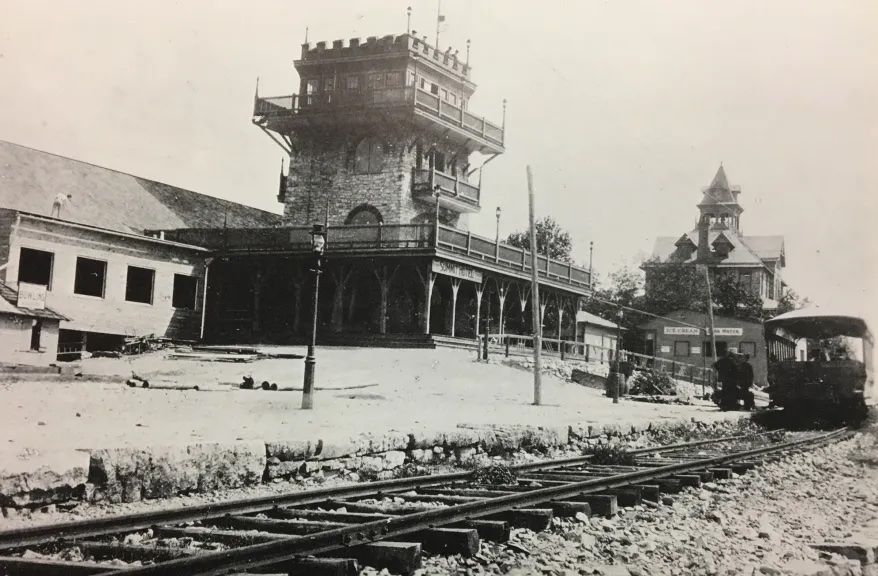
The Schwartz brothers were named William and Henry. Both men had gained considerable experience as proprietors of other establishments before going in together on the Summit House Hotel. Unfortunately William died in 1895 of kidney disease, only a few years after the venture started. Henry continued on running the Summit House for nearly three more decades and died in 1924.
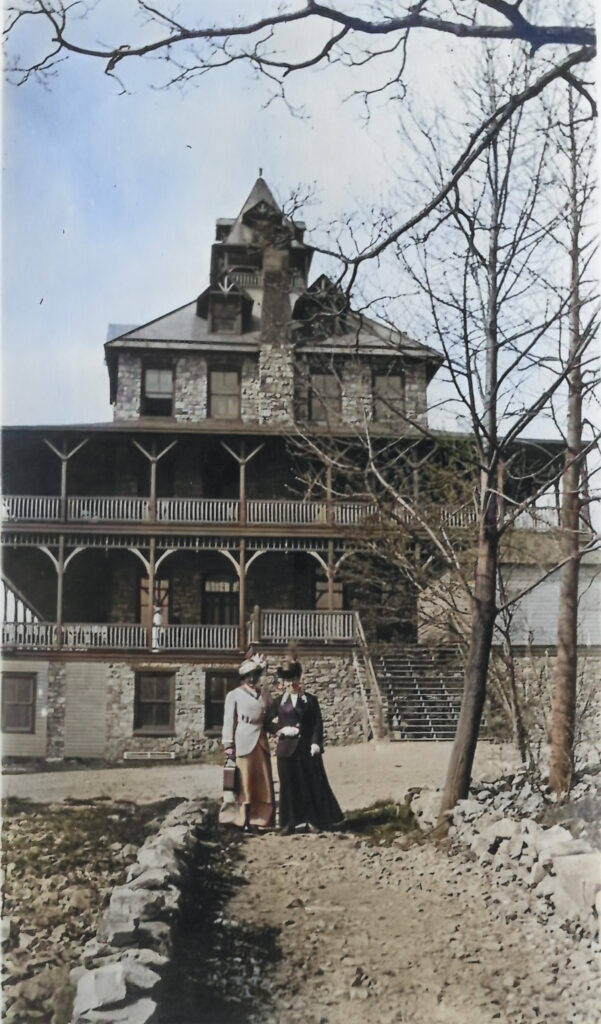
Henry lived just long enough to see the Gravity Tower be destroyed by a suspicious fire on the afternoon of April 23rd, 1923; just a few weeks before it was set to open for the summer season. The blaze burned for hours was a spectacle to thousands of residents in the city below. The April 24th, 1923 Reading Times indicated that matches and kerosene were found lying on the grounds near the site of the Gravity Tower, and that two men had been loitering nearby shortly before the fire started. Fortunately the Summit House Hotel was spared despite windswept embers threatening it many times. The burnt out stone wall ruins of the Gravity Tower were left standing for at least eight, perhaps as many as 15 years until the new observation tower was constructed in 1939.
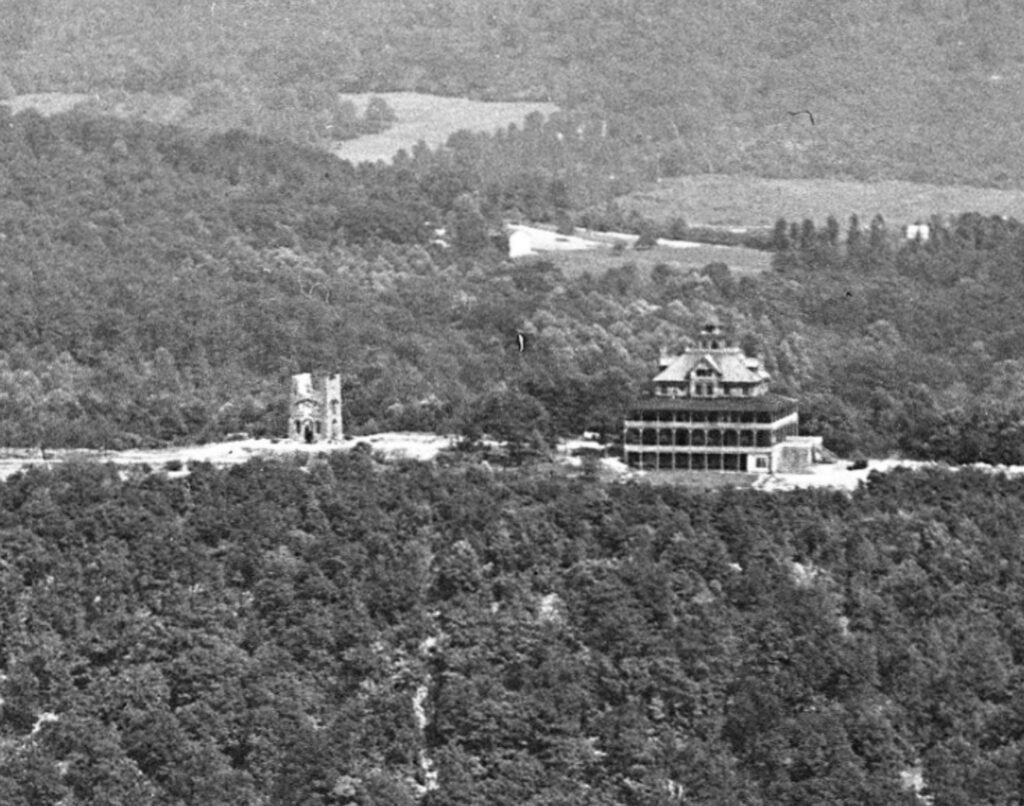
Tower Hotel
Around 1926 ownership of the hotel changed hands and the name became the Tower Hotel. The Gravity Railroad was bankrupt and closed by the early 1920s, but increasing popularity of the automobile gave second wind to those hard to reach mountain destinations. Like so many historic landmarks the hotel’s best days were long behind it. In 1933 the city purchased the floundering establishment for $20,000 and leased it to a bingo operation. Bingo was wildly popular at this time and used by civic clubs, religious organizations and commercial operators as a means of making money. The bingo business was a fairly successful venture and made significant revenue in lease money for the city yearly.
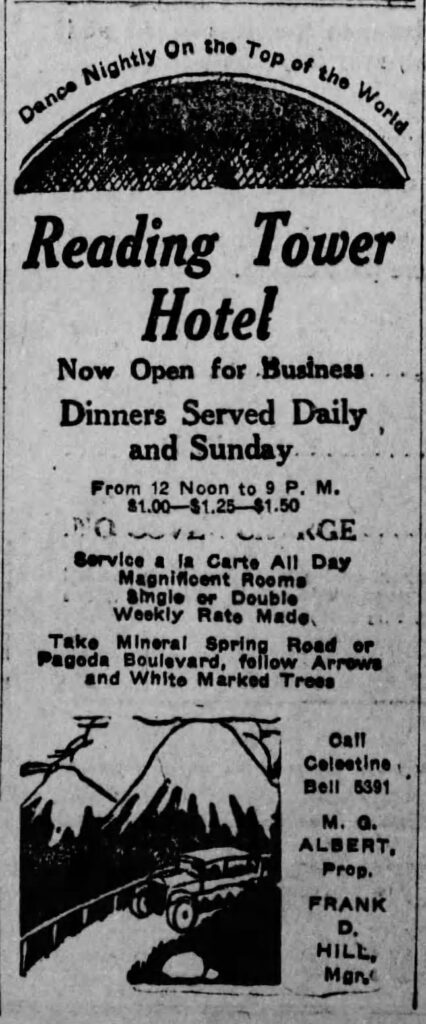
In a strange twist District Attorney John A. Rieser banned bingo in Berks County on June 8th, 1938. Philadelphia had implemented a similar stance a few weeks earlier. Bingo had been deemed a “game of chance” and was considered gambling, which had been completely illegal in the United States between 1910 and 1931. Some forms of gambling, like bingo, had been slowly reintegrated by 1938 but clearly the government wasn’t going to let it go unregulated. This story is an entire rabbit hole of its own and will be best told in a future post but for the sake of brevity; Bingo halls had two weeks to liquidate their assets. Seemingly shooting itself in the foot, the county put the city bingo establishment out of business and the Tower Hotel in imminent danger.
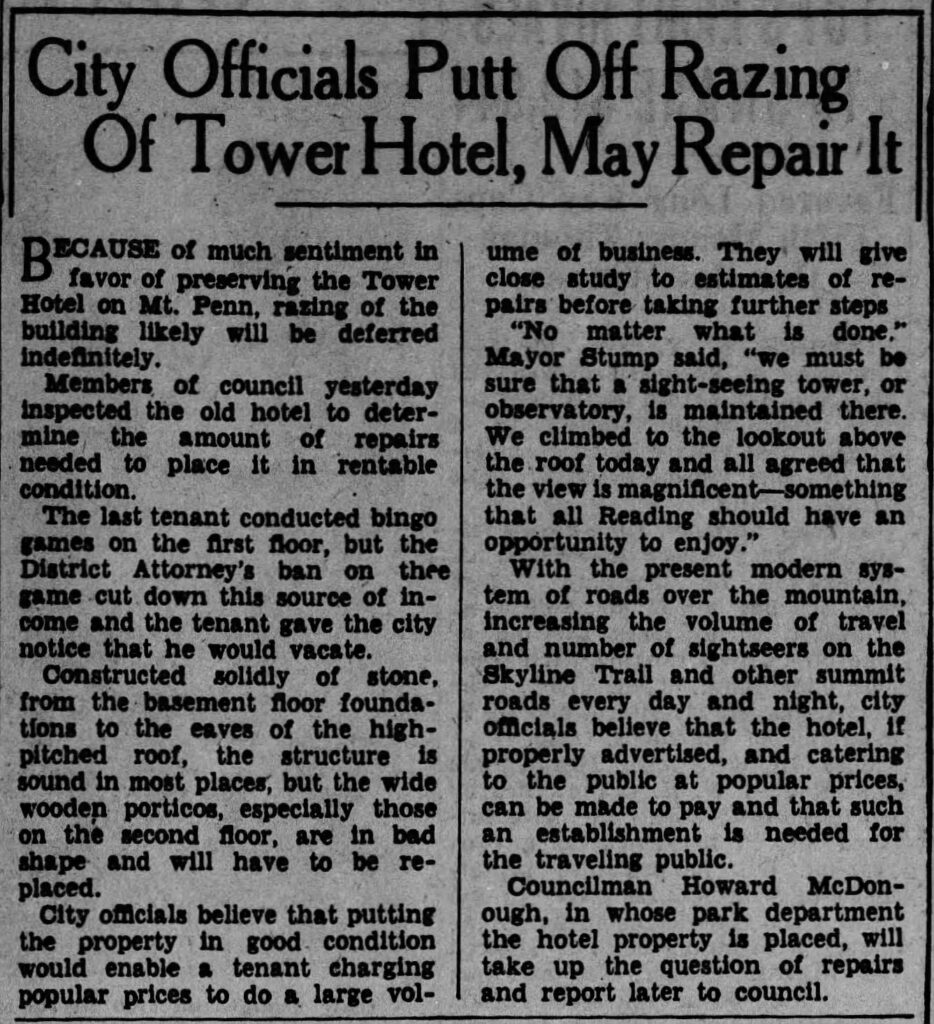
Headlines after the bingo ban brought the uncertainty of the future of the landmark to light. It hadn’t been successful as its original purpose in many years, but in typical Berks County fashion, no one actually wanted to see it go. An opportunity presented itself in 1939 when it was announced that the area had been granted WPA money for improvements of roads and the erection of a new observation tower.
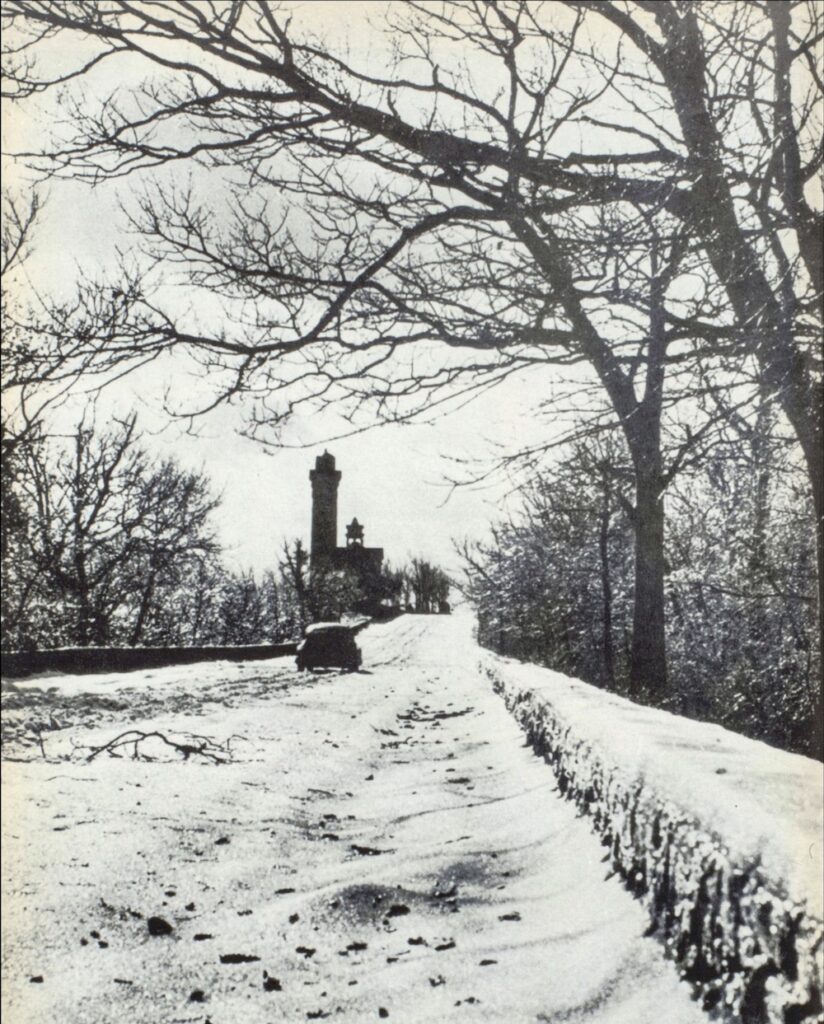
William Penn Memorial Fire Tower
Construction on the William Penn Memorial Fire Tower began in 1939. At a soaring 120 feet tall, it was double the height of the original Gravity Tower. The Pennsylvania Bureau of Forestry utilized the fire tower until 1988 when it was in disrepair and unable to be used any longer. Pagoda-Skyline, Inc raised the money to make the needed repairs in the early 2000s and has been maintaining the landmark since.
The tower got its name from Tony Pietrovito, who suggested via letter to Mayor Henry Stump that it be named after William Penn. Pietrovito, a local youth and lieutenant of the Boys’ Nautical Club, said he got the idea when he saw a pageant called “Penn’s Dream” given by the 1939 Reading senior class. It was dedicated officially on October 28th, 1939.
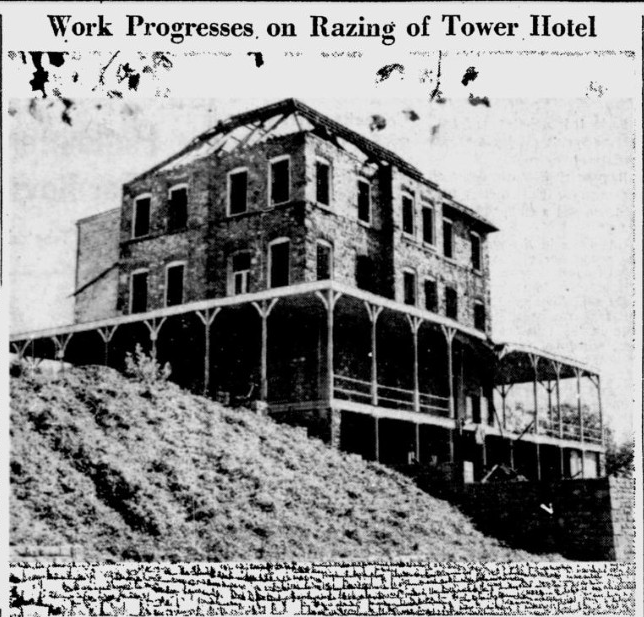
Despite the uncertainty in its future the Tower Hotel stood for another two decades as city property. In 1952 it was leased to Eastern Radio Corp. to become the studios of WHUM-TV. Although the lease was supposed to be for 10 years, Eastern Radio Corp. vacated the building and terminated the lease after only five. The building sat vacant for an additional two years and was finally razed in October of 1959. All usable wood and stone from the structure was saved and utilized in future city projects. The area in which the hotel stood is now a flat grassed area, and one basement room was saved and is currently used for storage. Explore the current view of the area with the 360 drone panoramic below.

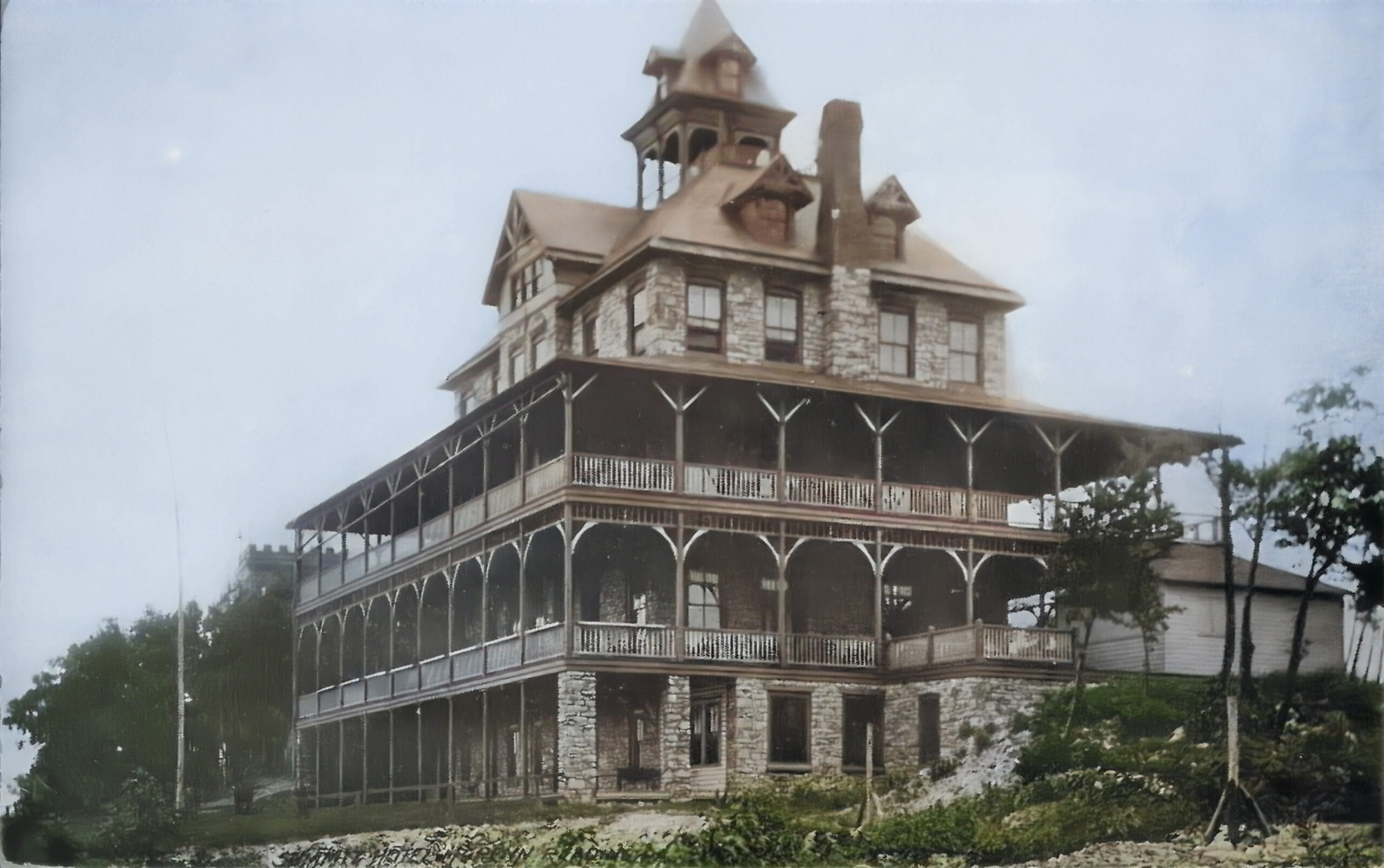
Very nice and interesting article. These are some great photos and I like the colorized versions along with the Dalin aerial view.
Always learn something new with your articles, thanks!! Received a really nice looking framed print from your store for Christmas (Pagoda in Fall). Great quality, would highly recommend!
thank you, glad you like it!
Nice work, Alexa – very informative!
I love these articles. The beautiful hotels and resorts on the Mountains are made more fascinating considering there’s barely a trace left. Thousands of people trekked an area used by hikers and bikers today. Please keep them coming.
Who built the wall going up to skyline drive?
From the book “Footprints on the Mountain” by Corrie Crupi, it says (in Chapter Three) that the wall was constructed and funded by the federal government (WPA). It was built between 1932 and 1935. Local works (and stone from the quarry on Mount Penn) were used.
TYPO: “Local workers…”
Looking at the overhead view, what part is from the original tower that still exists? Is it the outer square just inside the fence & the tiled walkway, or is it the tiled walkway and the inner square the current tower sits on? Those photographs are amazing, hard to believe all that fun stuff was up there (dance pavilion, shuffleboard, billiards, arcade, bowling, etc)
Hi Kevin, the old tower was completely taken down before the current one was built. I do not believe any of it was utilized.